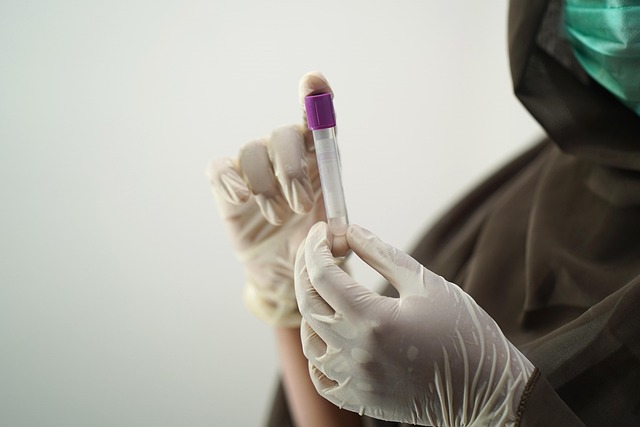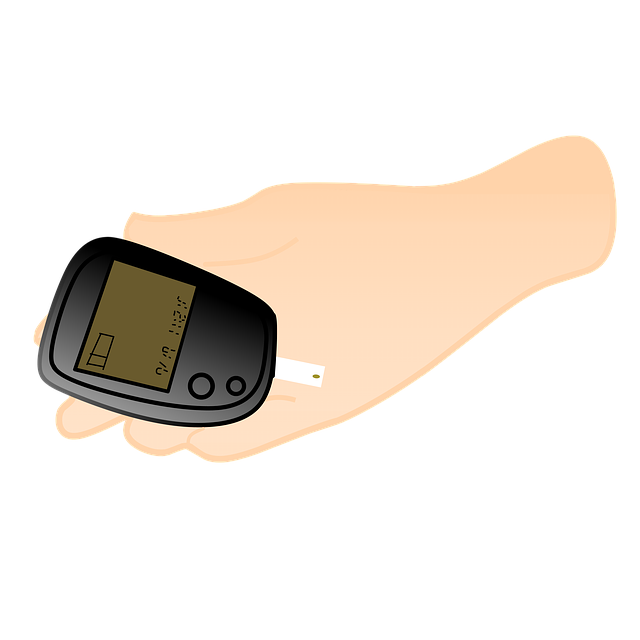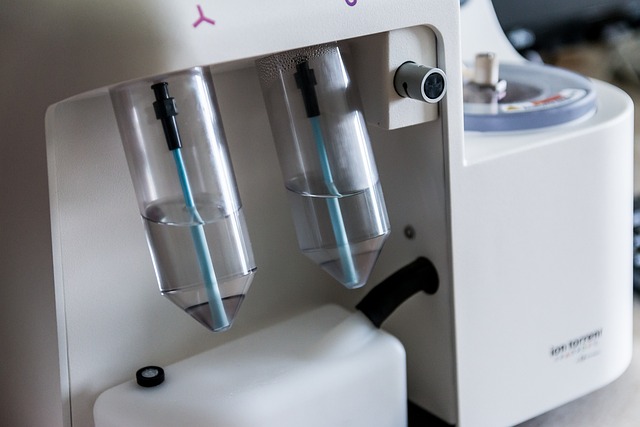The thyroid gland, crucial for metabolism, produces hormones T4 and T3. Home thyroid blood tests measure these levels to screen for hypothyroidism or hyperthyroidism. Test preparation includes dietary adjustments, fasting, and proper kit handling. Sampling involves pricking a finger and sending the sample for analysis. Results are interpreted against normal ranges (TSH, T4, T3). Abnormal test results lead to further diagnosis and treatment, including medication and lifestyle changes.
“Discover the power of self-care with a simple yet comprehensive guide to the home thyroid blood test. Understanding your thyroid function is crucial for overall health, and this at-home test offers convenience and peace of mind. Learn about the basics of thyroid health, what to expect during and after the test, and how to interpret results.
From preparation tips to navigating anomalies, this article equips you with knowledge. Whether you’re curious or concerned, we’ve got you covered with insights on diagnosis, treatment, and next steps for optimal thyroid care.”
- Understanding Your Thyroid: Basics Explained
- Preparing for the Home Test: What to Do Before
- The Process: How to Take and Send Your Sample
- Interpreting Results: Normal Ranges and Anomalies
- Next Steps After an Abnormal Test: Diagnosis & Treatment
Understanding Your Thyroid: Basics Explained

The thyroid gland, located at the base of your neck, is a small but mighty endocrine gland responsible for producing hormones that regulate many bodily functions, including metabolism. These hormones, thyroxine (T4) and triiodothyronine (T3), influence almost every cell in your body, ensuring energy production, growth, and development. Understanding how the thyroid works is essential when preparing for a home thyroid blood test, which can be a valuable tool for monitoring your thyroid health.
A home thyroid blood test allows you to measure the levels of T4 and T3 hormones in your bloodstream, providing insights into your thyroid’s functionality. This type of test is often used as an initial screening or to monitor conditions like hypothyroidism (underactive thyroid) or hyperthyroidism (overactive thyroid). By understanding the basics of thyroid function, you can better interpret the results of these tests and explore complementary remedies for thyroid disorders, such as dietary changes and lifestyle adjustments, if needed.
Preparing for the Home Test: What to Do Before

Preparing for a home thyroid blood test is a simple yet important step to ensure accurate results. Before conducting the test, it’s recommended to avoid certain foods and medications that could interfere with the results, such as iodine-rich foods and supplements, as well as some common cold medicines. Additionally, fasting for 8 hours before the test can improve accuracy by minimizing the impact of recent meals on thyroid hormone levels.
On the day of the test, make sure to bring your test kit, a sharp needle, clean needles, and alcohol swabs if provided. Wash your hands thoroughly, and follow the instructions in the kit carefully. It’s crucial to store and handle the blood sample correctly to maintain its integrity. If you have any questions or concerns about the process, how to check thyroid levels at home, or what to expect from a thyroid function panel explanation, consult your healthcare provider for guidance.
The Process: How to Take and Send Your Sample

Taking and sending your sample for a home thyroid blood test is a straightforward process designed to be convenient and efficient. First, clean and dry the area where you’ll be pricking your finger, ensuring no oils or lotions are present. Then, using the sterile lancet provided, gently prick your finger until a few drops of blood form. This usually takes just a few seconds. Collect the blood into the test tube or collection device included in your kit, being careful not to overfill it. Once you’ve gathered enough blood, apply gentle pressure to the puncture site with a clean tissue or gauze to stop any bleeding.
To send your sample, follow the instructions provided by the testing company. Typically, this involves placing the sealed tube into a secure packaging (often with cold packs for temperature-sensitive tests), sealing it, and dropping it off at a local collection center or mail it in using a pre-paid shipping label included in your kit. Remember, timely sampling and proper handling are crucial to ensure the accuracy of your home thyroid test results. If you have any concerns about your sample collection, consult with the testing provider for guidance.
Interpreting Results: Normal Ranges and Anomalies

When interpreting your thyroid function test results from a home thyroid blood test, understanding the normal ranges is key. The thyroid-stimulating hormone (TSH), thyroxine (T4), and triiodothyronine (T3) levels are typically measured. A home thyroid blood test provides a convenient way to monitor these markers of thyroid health.
Normal thyroid levels vary slightly between labs, but generally: TSH should be between 0.4-4.0 mIU/L, T4 around 5-12 mcg/dL (for reference), and T3 between 80-200 ng/dL. Any deviations from these ranges might indicate underlying issues. For instance, consistently high TSH suggests hypothyroidism, while low T4 or T3 can signal hyperthyroidism. The thyroid screening recommendations for women often emphasize the importance of regular testing due to gender disparities in thyroid conditions. If your results fall outside normal limits, discuss them with a healthcare provider as many treatable thyroid conditions at home can be managed effectively once identified.
Next Steps After an Abnormal Test: Diagnosis & Treatment

After receiving an abnormal result from your home thyroid blood test, the next steps involve diagnosis and treatment. If the test indicates hypothyroidism, for example, further evaluation is necessary to pinpoint the cause. This might include additional tests, such as a TSH (thyroid-stimulating hormone) test or an antibody panel, to help identify underlying conditions like Hashimoto’s thyroiditis. Once diagnosed, a healthcare professional can prescribe appropriate treatment options, which often include synthetic thyroid hormones to restore balance.
For some individuals, a combination of conventional medicine and complementary remedies for thyroid disorders may be recommended. These remedies could include dietary changes, such as incorporating more iodine-rich foods, managing stress through techniques like meditation or yoga, and adjusting sleep habits. In certain cases, lifestyle modifications and natural supplements might support overall thyroid health alongside medical interventions, including regular monitoring via subsequent thyroid blood tests to ensure optimal hormone levels.
A home thyroid blood test can be a convenient first step towards understanding your thyroid health. By following the simple preparation and collection process outlined in this article, you can ensure accurate results. Interpreting your test outcomes is crucial—normal ranges indicate optimal function, while anomalies may point to underlying issues. If abnormal results are detected, consult a healthcare professional for diagnosis and tailored treatment options. Taking charge of your thyroid health is an essential step towards overall well-being.
